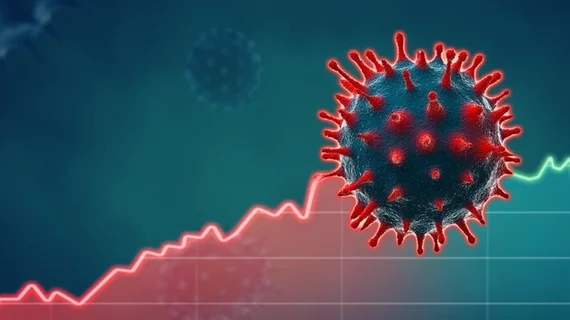2 new strategies for identifying COVID-19 patients at a higher risk of severe illness or death
It’s been several months now since the COVID-19 pandemic first began, and healthcare researchers around the world are still working to learn which hospitalized patients are at the greatest risk of experiencing severe symptoms or even death.
Countless research teams are currently focused on this area, with new assessments of hospitalized COVID-19 patients coming out on a daily basis. Could two recent studies—one out of Italy, another from the United States—help provide specialists with new information?
The authors behind one of those studies noted the connection between COVID-19 and venous thromboembolism and explored the effectiveness of the CHA(2)DS(2)-VASc risk score as a prediction tool for mortality among COVID-19 patients.
The team tracked data from 864 patients who were treated in one of four regions of Italy, publishing their findings in the American Journal of Cardiology.
Overall, they found that, yes, patients with higher CHA(2)DS(2)-VASc risk scores had higher rates of mechanical ventilation or death. These risk scores, they added, “could be easily calculated at admission in order to initially discern patients with increased thromboembolic risk.”
“It is plausible that clinicians may wish to choose a specific anticoagulant treatment for such high risk patients,” wrote lead author Gaetano Ruocco, MD, of the cardiology division at Regina Montis Regalis Hospital, and colleagues.
The authors of another recent study, published in Annals of Internal Medicine, developed the COVID-19 Inpatient Risk Calculator to predict the likelihood of severe disease or death among hospitalized COVID-19 patients. They tracked data from 832 patients treated at one of five U.S. hospitals to develop the prediction tool, using “only factors present on admission” to successfully identify patients at a greater risk of experiencing severe symptoms or death.
“Our study provides insight into the disease trajectories of hospitalized patients with COVID-19 in the United States and the risk factors associated with severe outcomes,” wrote lead author Brian T. Garibaldi, MD, Johns Hopkins University School of Medicine in Baltimore, and colleagues. “Rapid progression of disease after admission provides a narrow window to intervene to avert these outcomes.”

